
2022: A YEAR OF LIVING CAUTIOUSLY?
What’s on consumers’ minds as we head into 2022? This update reveals some intriguing changes since March, when we last polled 1,000 American shoppers for our 2021 Consumer Optimism Outlook. Three new trends stand out for marketers:
1. FUTURE IMPERFECT >
Mixed feelings about the year ahead
2. A LIFE LESS EXTRAORDINARY >
Enjoyment on a smaller scale
3. LOOKING AFTER #1 >
The unstoppable rise of self-care
Generation (Gen) Z: born 1997–2003 / Millennial: born 1981–1996
Generation (Gen) X: born 1965–1980 / Baby boomer: born 1946–1964
AT A GLANCE
Meet 2022’s conflicted consumer
Get the key facts and trends in one handy graphic.
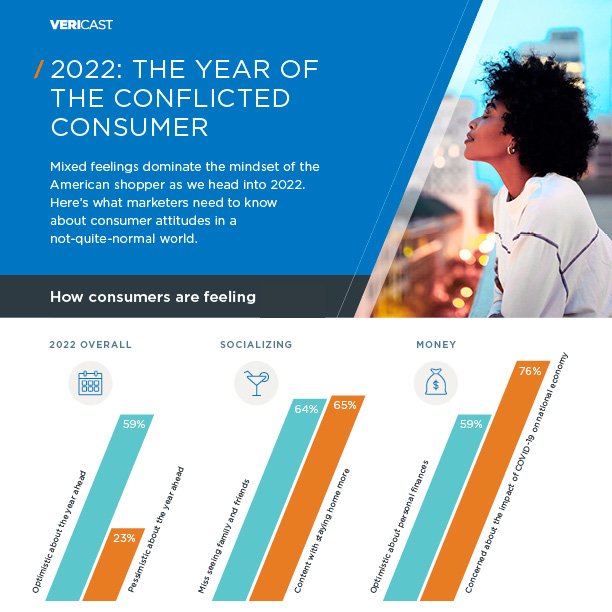
1. FUTURE IMPERFECT:
Mixed feelings about the year ahead
Americans are optimistic about their own lives …
While there continues to be uncertainty about the future, the return of familiar rhythms — back to school, back to the workplace, holiday gatherings — has led to an uptick in optimism about consumers’ own lives and well-being.
In August 2021, 59% of consumers said they were optimistic about the year ahead — rising to 68% of parents and 67% of millennials.
Higher hopes for 2022
Optimism increased in August versus March
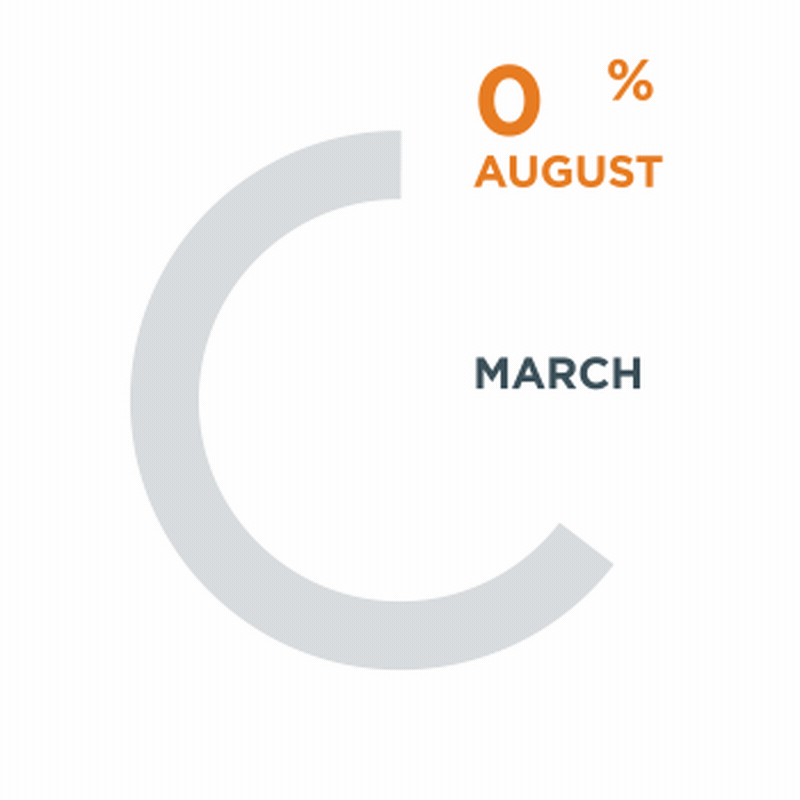
Physical Health
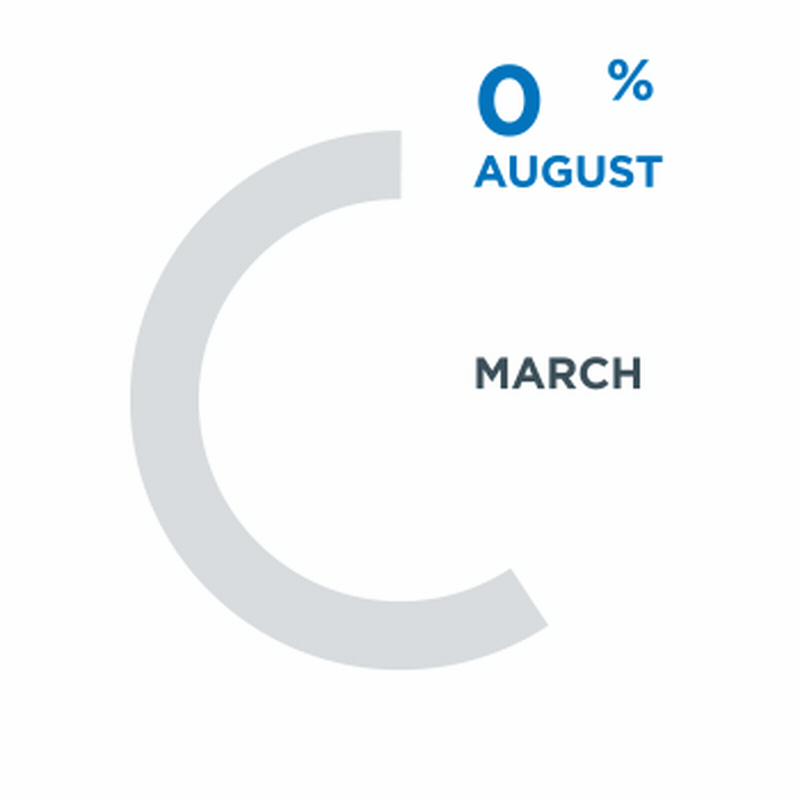
PERSONAL FINANCE
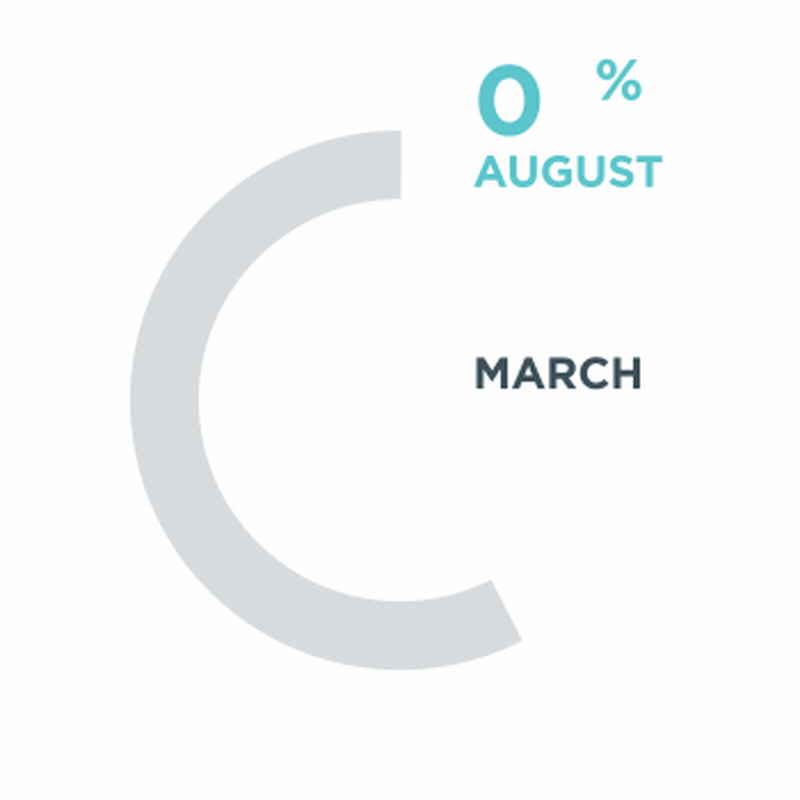
WORK-LIFE BALANCE
… but anxious when they’re not in control.
Even with this optimism, concerns about virus containment and the national economy suggest people are apprehensive about things outside of their direct sphere of control.
That’s reflected in feelings about the 2021 holiday season, where the home environment and familiar, comforting routines felt most important.
62%
Spending time with immediate family
42%
making a home cooked holiday meal
42%
spending time with friends
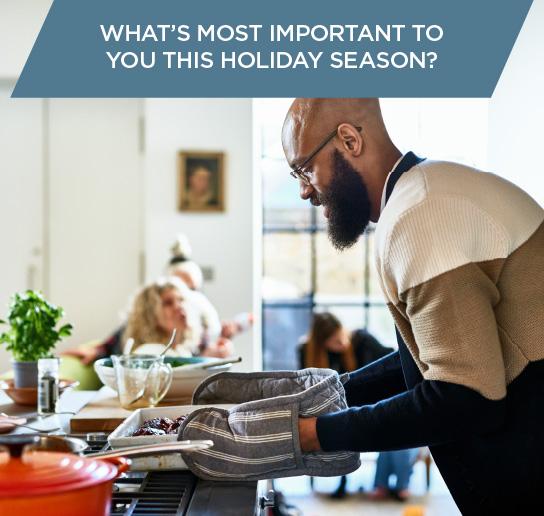
34%
creating a festive home
33%
maintaining annual family rituals

Help consumers feel more in control
Consumers are optimistic about the future when they feel in control, so focus campaigns around familiar and comforting routines, rituals and celebrations.
2. A LIFE LESS EXTRAORDINARY:
Enjoyment on a smaller scale
They’re eager to make up for lost time – as long as it’s safe
Consumers are eager to reconnect with loved ones after the “lost year” of 2020– but plan to stick to places, events and transportation modes that feel lower-risk.
In August 2021, 72% of consumers said they plan to follow CDC or local recommendations to make the holiday season safe.
Private cars and short trips feel safest.

75% are comfortable with in-state road trips

65% are comfortable with out-of-state road trips

37% are comfortable with public transportation like subways, trains or buses
TRENDWATCH
Cocoons of comfort
In 2020, the home and the internet became the dominant environment for work, relaxation and socializing. By August 2021, we see people ready to venture out again: to meet friends and family, go shopping and dine out. But there’s a strong sense that this needs to happen in an environment that feels safe. Building a “cocoon of comfort” means staying local, socializing on a smaller scale, and avoiding crowds, strangers and public transportation.

They’d prefer to shop and dine locally (for now).
Consumers want to stick to locations where they feel safe and in control, enhanced by a sense of wanting to support their local community in tough times. That means a bigger focus on shopping and eating locally — although Gen Z is happier to venture further.
THEY WANT HELP TO MAKE THESE WORRYING TIMES SPECIAL
Savings are a nice-to-have at any time, but with 76% of Americans concerned about the impact of the pandemic on the national economy, many are looking for help to get more out of their holiday budget.

Offers and discounts will be key to helping people make the holiday season special — particularly as many of those who spend more this year will do so to make up for 2020, not because they’re feeling more flush.
What information would you like to receive from advertisers this holiday season?
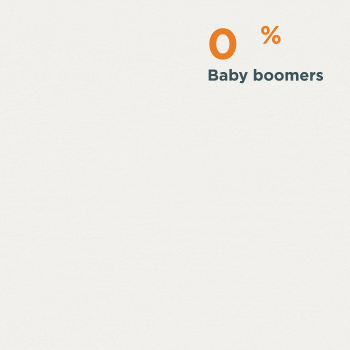
Deals & discounts to make holiday shopping more affordable
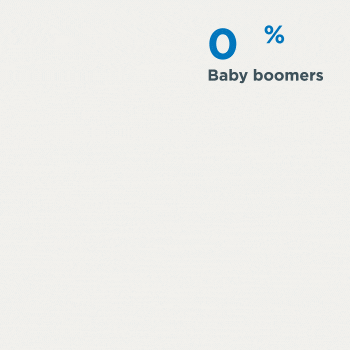
Shop to find the best deals locally
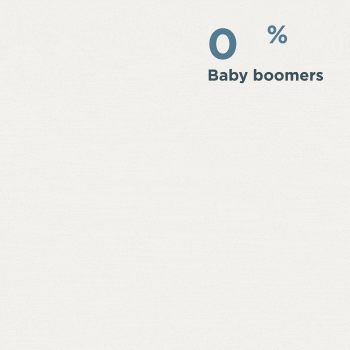
Restaurant deals for busy days
Which items would you be most interested in receiving a discount on this holiday season?

Grocery

Restaurant

Beauty/personal care

Meet people where they are, with savings to ease economic fears
Consumers want to get back to normal patterns of shopping and socializing, but virus fears and economic anxiety mean they want to stay local and make budgets stretch further. As these feelings may remain into 2022, — meeting people where they are – with savings at local outlets and restaurants – should reap rewards.
3. LOOKING AFTER #1:
The unstoppable rise of self-care
The pandemic still weighs heavy. Consumers have welcomed the return of familiar activities, but the feeling of things being “not quite normal” is taking a toll.
In August 2021, 30% of consumers were looking for ways to care for their mental, emotional and physical health — a huge jump from 18% in March.
The COVID surcharge
A growing emphasis on self-care might seem odd at a time when life is returning to something more like normal. But fears over a resurgence of the virus and its potential economic impact add a layer of stress to daily life that we’ve dubbed the “COVID surcharge”. We can expect it to last for a while yet — and it will make self-care a continuing priority for shoppers into 2022.
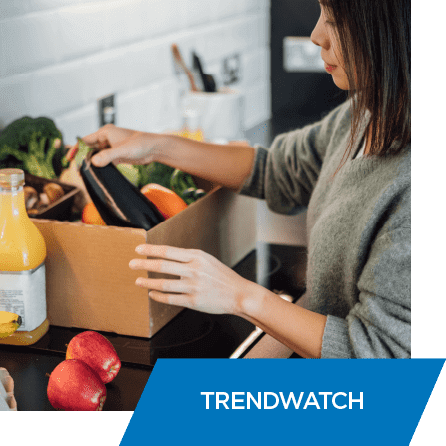
Many remain concerned about children’s health – suggesting anxiety over the risks of in-person education. (For more insights into current feelings about return to learning, read our Back -to-School Outlook.)
50% of Gen Z and 43% of millennials say a break from work and daily responsibilities is important when celebrating the holidays — hinting at stress and burnout in these demographics.

Self-care strategies differ, but nesting instincts remain strong
Beating the COVID surcharge means different things to different generations — with Gen Z interested in home décor, Gen X in beauty/personal care, and baby boomers in restaurant offers. But across generations, home is still a key comfort zone, with 46% spending more on home improvements (up from 39% in March).
Holiday self-care: How brands can help

Help reduce stress with self-care treats and supportive messages
Recognize that shoppers are still dealing with high levels of stress and anxiety – and look for ways to lighten the load. That could be offers and discounts on treats and home improvements, or it could mean emphasizing your product’s emotional wellbeing benefits. Even a nod to the importance of self-care in campaign copy could make a positive difference.
Want more insights like this?
Meet 2022’s conflicted consumer and download the key facts and trends in one handy graphic.
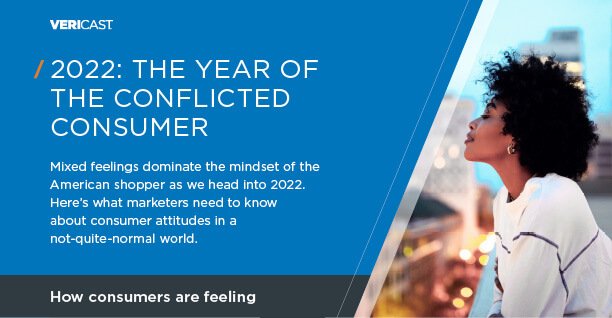
The study was fielded Aug. 3 through Aug. 14, 2021 in conjunction with a global, third-party market research firm with proficiency in internet surveys. The sample is nationally representative and was derived from an online consumer opinion panel, and all participants were at least 18 years of age and living in the contiguous United States. The survey was closed once 1,000 completed responses had been reached.
